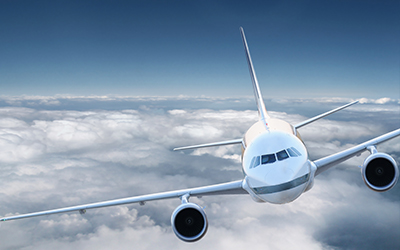Image Credit:
File ID 9220366 | © Ilja MaÅ¡Ãk | Dreamstime.com

Traveling the world and taking a cross-Atlantic vacation can be a very different experience today than it was 100 years ago. Instead of the journey taking months on a boat, travelers can make the trip in a matter of hours aboard a jet airliner. Not only can passengers get to their destination much faster, but they can also watch a movie, eat a meal, and even sleep during the entire flight. Speed, price and comfort are all advantages that have come to modern air traveler. Airliners cruise at altitudes of anywhere from 35,000 to 42,000 feet. Because the air is much thinner at these altitudes reducing drag and making it possible for planes to make these flights much quicker, safer and more fuel-efficient. But with such thin air, the airplane cabin must be pressurized and filled with breathable oxygen making the flight as seamless and comfortable as possible for every passenger.
How is this accomplished? When an airplane reaches its cruising altitude, the atmospheric pressure drops significantly. The pressure at these altitudes is about 4 pounds per square inch, while the pressure on board is simulated to the pressure at about 8,000 feet (11 psi) inside the cabin. This allows the differential in air pressure to remain at tolerable levels for the structural integrity of the aircraft keeping the plane in one piece and the passengers safe.
The aircraft utilizes an outflow valve to control the air pressure inside the cabin. This valve is controlled automatically as part of the aircraft’s systems. The operation is pretty straight-forward. If more air is needed inside the cabin, the valve closes. If the pressure is too high inside the cabin, the valve opens, allowing air to escape the aircraft. This works for all situations an aircraft might be in. In an emergency, it might be necessary for the plane to descend rapidly, resulting in negative air pressure where the pressure outside the aircraft is greater than the pressure inside the cabin. In this event, a spring-loaded negative pressure relief valve is used to allow air into the cabin, evening out the pressure differential.
So, where does the air come from to pressurize the cabin? One method is to utilize bleed air from the engines. Jet engines ingest air via the engine fan which is used in the fuel ignition process. Bleed air comes from the compressor stage and enters the cabin to pressurize it. Bleed air also provides air for hydraulic pumps or in ice protection.
Here at Elevate Aviation, you can start on the path towards becoming a commercial airline pilot. You can learn more about flight training and how airplanes operate. Elevate Aviation offers plane management, flight training, and aircraft rentals.